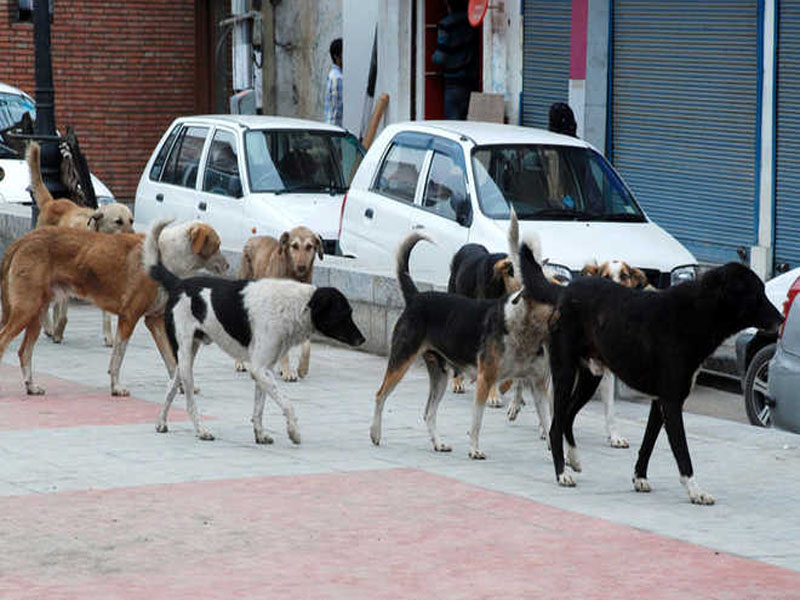From Guns to Growls: Kashmir’s New Urban Menace
By: Javid Amin | 28 October 2025
A Silent Crisis on Kashmir’s Streets
Once known for its breathtaking landscapes and political turbulence, Jammu & Kashmir is now grappling with a new kind of urban menace — one that bites. Literally.
Between 2022 and 2025, official records show a staggering 2,12,968 dog bite cases across the Union Territory. That’s an average of 160 people bitten every single day, or nearly 4,700 every month.
This epidemic of stray dog attacks has turned walking to school, work, or the local mosque into an act of anxiety.
The Numbers That Bark
According to data presented in the Jammu & Kashmir Legislative Assembly, the magnitude of the problem spans both regions:
| Division | Reported Dog Bite Cases (2022–2025) |
|---|---|
| Kashmir Division | 1,14,498 |
| Jammu Division | 98,470 |
| Total | 2,12,968 |
Top Affected Districts
-
Jammu: 54,889 cases
-
Srinagar: 36,406 cases
-
Anantnag: 26,453 cases
-
Baramulla: 18,563 cases
-
Shopian: 1,357 cases (lowest)
Srinagar alone has an estimated 90,000 stray dogs — a number that outpaces its waste management capacity and civic infrastructure.
Who’s at Risk?
Doctors at SMHS Hospital’s Anti-Rabies Clinic report that children and the elderly are most vulnerable.
-
Children are frequent victims because they play outdoors and are often unaware of canine territorial behavior.
-
Elderly citizens face slower response times and greater infection risk.
For many residents, the fear of being bitten now dictates their daily routines. Early morning joggers avoid parks, milkmen and newspaper delivery staff carry sticks, and parents escort their children to school instead of letting them walk alone.
“We survived curfews and crackdowns — but now we’re scared of our own streets,” says Farida Begum, a teacher from Rajbagh, Srinagar.
Rabies: The Invisible Threat
Beyond the physical trauma lies a darker danger: rabies, a viral infection that is almost always fatal once symptoms appear.
According to the Health Department, hundreds of bite victims are treated every month with anti-rabies vaccines (ARVs) — yet vaccine shortages have been reported multiple times.
Each ARV dose costs between ₹350–₹700 in private pharmacies, a burden for lower-income families who often skip the full vaccination cycle, risking infection.
What’s Causing the Spike?
Experts and civic officials point to three overlapping failures fueling the crisis:
-
Uncontrolled Stray Population
-
Poorly implemented sterilization drives have failed to curb reproduction rates.
-
A single unsterilized pair can lead to dozens of offspring in a single year.
-
-
Urban Waste Mismanagement
-
Overflowing garbage dumps act as food sources, sustaining and multiplying stray populations.
-
Srinagar generates nearly 450 metric tonnes of waste daily, but scientific disposal remains inadequate.
-
-
Lack of Public Awareness
-
Residents often provoke stray dogs unknowingly or fail to report aggressive behavior.
-
Myths about sterilization cruelty hinder public cooperation with Animal Birth Control (ABC) programs.
-
Government Response
The J&K Animal Welfare Board and local municipal bodies have launched sterilization and vaccination programs.
Under the Animal Birth Control (Dogs) Rules, 2023, authorities are required to sterilize, immunize, and release dogs back into their original territories.
However, the pace is painfully slow.
-
Srinagar Municipal Corporation (SMC) currently sterilizes around 40–50 dogs per day, while the population grows far faster.
-
The new sterilization facility at Tengpora, with a capacity of up to 70 dogs daily, is operational — but experts estimate at least 300 sterilizations per day are needed for any visible impact.
The Civic and Policy Dilemma
Stray dog control sits at the intersection of public health, urban governance, and animal rights.
-
Animal activists oppose mass culling, citing Supreme Court rulings that mandate humane treatment.
-
Citizens demand safety, questioning why human lives appear secondary to bureaucratic red tape.
-
Civic bodies struggle with limited funds, slow tenders, and lack of veterinary staff.
“We are trapped between compassion and chaos,” admits a senior SMC official. “We need a policy that balances both.”
Beyond Blame: What Needs to Change
To turn the tide, experts and civic activists recommend a multi-layered, humane strategy:
1. Scale Up Sterilization
-
Expand veterinary partnerships with NGOs and private hospitals.
-
Adopt mobile sterilization units for rural and semi-urban areas.
2. Fix Waste Management
-
Implement door-to-door waste collection and sealed dumping systems.
-
Penalize open garbage disposal that sustains stray populations.
3. Ensure ARV Availability
-
Maintain vaccine stockpiles at every district hospital.
-
Introduce free public vaccination camps for bite victims.
4. Public Education Campaigns
-
Teach schoolchildren and citizens safe behavior around dogs.
-
Use radio, social media, and local mosques for awareness outreach.
5. Accountability and Data Transparency
-
Publish monthly sterilization and bite case statistics.
-
Involve Resident Welfare Associations (RWAs) and mohalla committees in monitoring hotspots.
The Bigger Picture
The rise in dog bite cases reveals something deeper — a crisis of urban governance. Cities like Srinagar and Jammu are expanding rapidly, but civic systems have not evolved to match their population density, waste output, or environmental changes.
Dog bites are not just about animals; they’re about how cities treat space, hygiene, and life itself.
“We’ve built cities for cars, not for coexistence,” says urban planner Dr. Shaista Rather. “Until we manage our waste and streets better, the dogs are only a symptom — not the disease.”
From Fear to Coexistence
It’s time to shift the narrative — from fear and neglect to responsibility and coexistence. Humane animal management, when done right, protects both humans and dogs.
Jammu & Kashmir’s stray dog crisis can’t be solved by one-time drives or press statements. It demands consistent policy, coordinated action, and compassionate planning.
Because every statistic — every “bite case” — is ultimately a story of civic failure that can, and must, be prevented.



